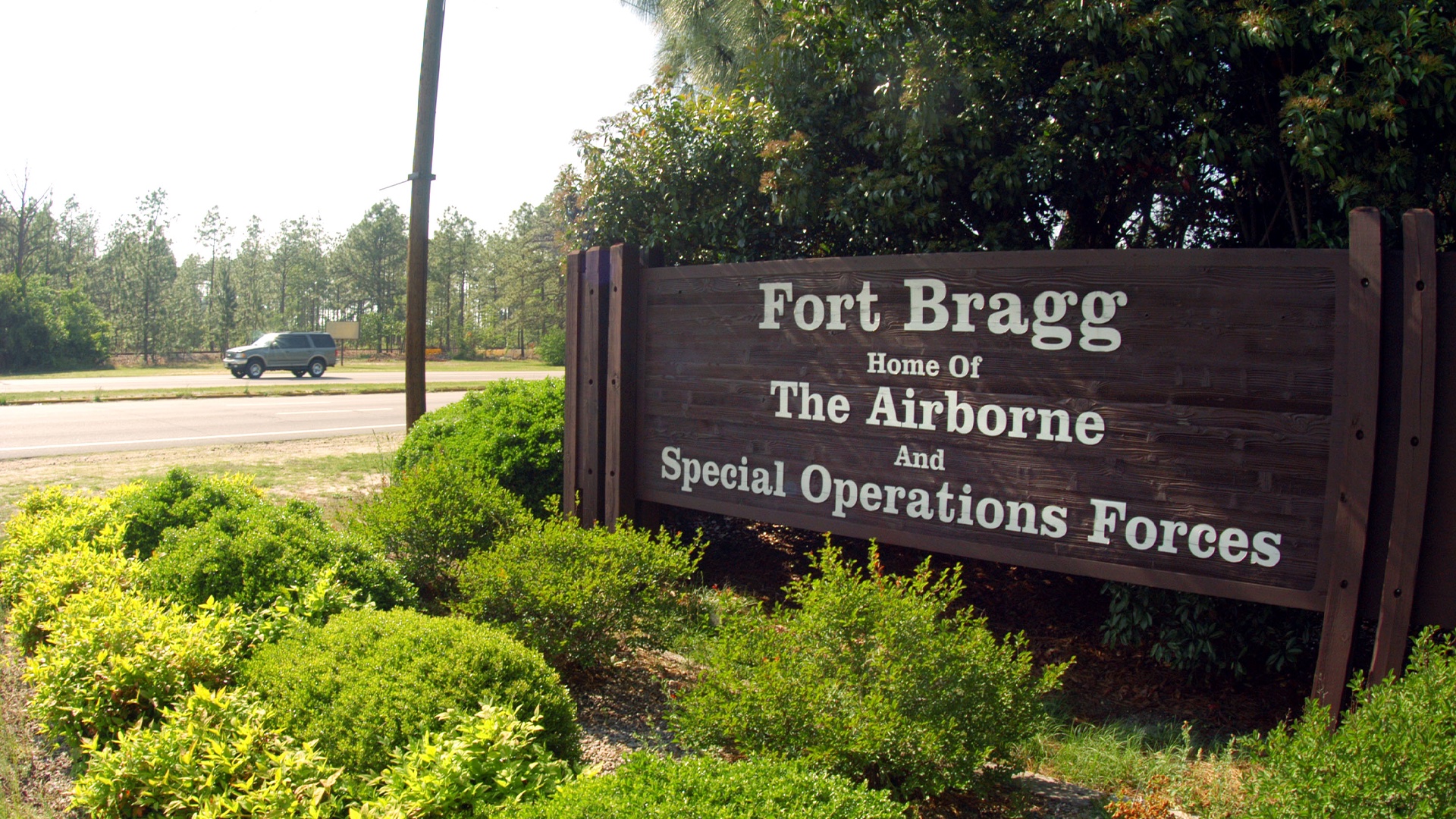

Defense Secretary Pete Hegseth vowed Tuesday that returning the name Fort Bragg to a major Army base in North Carolina is just the start of his efforts to override name changes made to bases that once honored Confederate leaders.
Fort Moore, Georiga — formerly Fort Benning — Hegseth hinted, is high on his list.
“We’re not done there,” Hegseth said during a news conference on Tuesday in Stuttgart, Germany. “There’s a reason I said ‘Bragg’ and ‘Benning’ when I walked into the Pentagon on Day 1. But it’s not just Bragg and Benning. There are a lot of other service members that have connections, and we’re going to do our best to restore it. It’s an honor to do so.”
The Army changed the name of nine bases in 2022 and 2023 following recommendations by an official naming commission. All nine bases were originally named for generals or leaders of the Confederacy. Among the more controversial of the changes were decisions to change Fort Bragg to Fort Liberty and Fort Benning to Fort Moore.
On Monday, Hegseth issued a memo to the Army secretary directing Fort Liberty, North Carolina, to revert to its original name, Fort Bragg. But instead of honoring a Confederate general, the name now honors Army Pfc. Roland L. Bragg, a paratrooper awarded the Silver Star and Purple Heart during the Battle of the Bulge in World War II.
“During these hellish conditions and amidst ferocious fighting, Pfc. Bragg saved a fellow soldier’s life by commandeering an enemy ambulance and driving 20 miles to transport a fellow wounded warrior to an allied hospital in Belgium,” Hegseth wrote in his memo.
Bragg’s role as a paratrooper matches Fort Bragg’s long-time status as the “Home of the Airborne” as the garrison of the 82nd Airborne Division.
Hegseth also wrote that his directive to restore Fort Bragg’s original name honors the soldiers who trained there and deployed to crises around the world, including Pfc. Bragg, and the name change is “in keeping with the installation’s esteemed and storied history.”
In a video posted on social media on Monday, Hegseth punctuated his announcement on the name change by saying, “That’s right: Bragg is back.”
Originally named for Gen. Braxton Bragg, the installation was one of nine major Army installations that were named for Confederate leaders. Gen. Bragg had a reputation as a poor leader, and his defeat at the Battle of Chattanooga in 1863 prompted him to resign. He was also not popular with his troops. “He was looked upon as a merciless tyrant,” Pvt. Sam Watkins wrote in his memoirs.
Following the death of George Floyd at the hands of Minneapolis police in 2020, the debate over why the Army had bases that honored Confederates intensified, although President Donald Trump made clear at the time that he opposed renaming the installations.
Ultimately, the names of all nine bases were changed following recommendations by an official naming commission.
But during his most recent presidential campaign, Trump vowed to change Fort Liberty’s name back to Fort Bragg. Hegseth signaled that such a change was coming when, as he mentioned, he told reporters during his first day at the Pentagon that he was thinking about U.S. troops assigned to “Fort Benning and Fort Bragg” as well as service members overseas.
On Tuesday, Hegseth decried the decision to change the names of Fort Bragg and other Army bases.
“It’s a shame what was done to vets, service members, their families, who were born there, deployed out of there, lived there,” Hegseth told reporters. “I was with the airborne troops here, some of which spent 25 years at Fort Bragg and never called it Fort Liberty because it wasn’t Fort Liberty. It’s Fort Bragg.”
Hegseth added, “Junior enlisted have never seen better days.”
The latest on Task & Purpose
- The ‘gig line’ is back in the Air Force even if you didn’t know it ever left
- This new Army special ops fitness center is decked out like a pro sports gym
- Here’s what the Army’s 75th Ranger Regiment looks for in candidates
- The Navy’s Future Sailor Prep Course was aimed at marginal recruits. It’s producing honor grads.
- Fort Bliss gets a glimpse into the future with 3D-printed barracks
